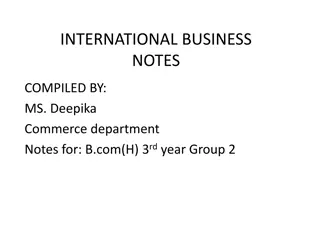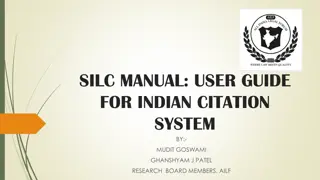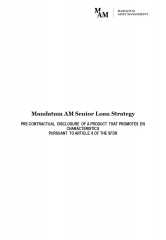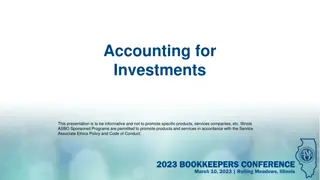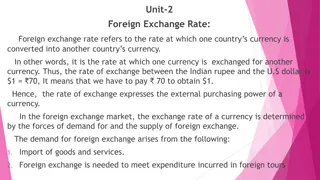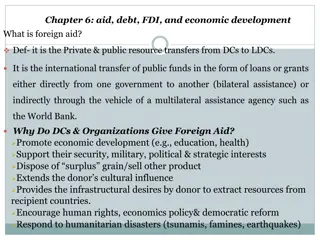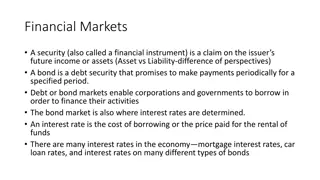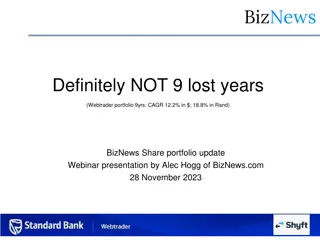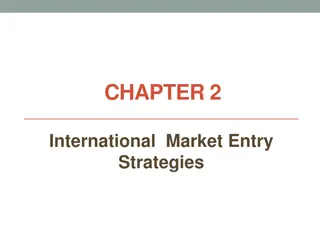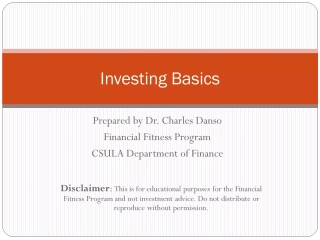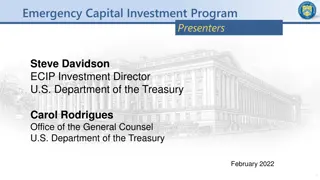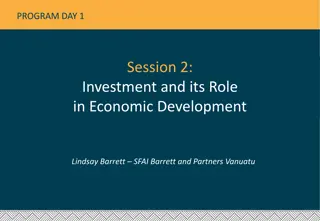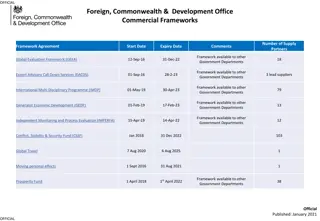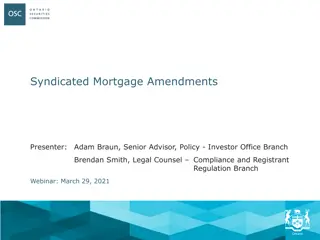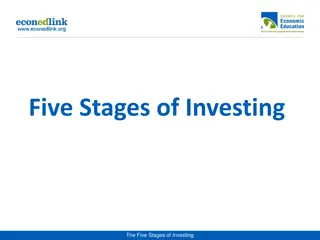Foreign Investments in India: Legal Framework and Investment Routes
Key statutes applicable for foreign investors in India include FEMA, SEBI regulations, and legislations governing securities markets. Foreign investments avenues in India include FDI, FVCI, FPI, NRI investments through SEBI approval or automatic approval route. Foreign Portfolio Investors (FPIs) and Non-Resident Indian/Overseas Citizen of India (NRI/OCI) investment routes are detailed, along with reporting requirements under SAST Regulations.
- Foreign Investments
- Legal Framework
- Investment Routes
- Foreign Portfolio Investors
- NRI/OCI Investments
Download Presentation

Please find below an Image/Link to download the presentation.
The content on the website is provided AS IS for your information and personal use only. It may not be sold, licensed, or shared on other websites without obtaining consent from the author. Download presentation by click this link. If you encounter any issues during the download, it is possible that the publisher has removed the file from their server.
E N D
Presentation Transcript
LEGAL LEGAL FRAMEWORK FRAMEWORK 2
Key statutes applicable for foreign investors include: FEMA, 1999 SEBI Foreign Portfolio Investors Regulations, 2019 SEBI Regulations applicable to key market intermediaries such as Custodians, Stockbrokers and regulations governing investor classes Mutual Funds /collective investment schemes, Alternative Investment Funds, Portfolio Manager etc. Important legislations governing securities market Legislations governing securities market in detail is included in Annexure 1: 3
INVESTMENT ROUTES IN INVESTMENT ROUTES IN INDIA INDIA 4
Foreign Investments in India Portfolio investments Direct investments Foreign Investment Avenues FDI FVCI FPI NRI SEBI Approval Automatic Approval Route Government of India Approval* *The approval would be provided by the respective ministry or department on behalf of the Government of India. Certain sectors would also require inputs from the Ministry of Home Affairs. 5
Foreign Portfolio Investors (FPIs): Entities established or incorporated outside India and permitted to invest in listed Indian securities and unlisted debt. Foreign Portfolio Investment is any investment made by a person resident outside India in capital instruments where such investment is Less than 10 percent of the post issue paid-up equity capital on a fully diluted basis of a listed Indian company or Less than 10 percent of the paid-up value of each series of capital instruments of a listed Indian company. Reportingunder (SAST) Regulations, 2011- On reaching the prescribed threshold of: 5% or more of the shares of the target company. Reporting to be done within 2 working days of the receipt of intimation of allotment of shares, or the acquisition of shares or voting rights to every stock exchange where the shares of the target company are listed and the target company at it registered office. +/- 2% change in the holding position of the target company. Reporting to be done within 2 working days Foreign Investment Avenues Non-Resident Indian/ Overseas Citizen of India (NRIs/ OCIs): An Indian citizen who stays abroad for employment or carries on business or vocation outside India or a non-resident foreign citizen of Indian origin. Portfolio Investment route for entities classified as Non-Resident Indians (NRI) and Overseas Citizen of India (OCI) Only entities eligible as NRI/ OCI as per Government guideline are eligible under this route. Appointment of a custodian is not compulsory Investment in Listed securities and other securities permissible under FEMA Individual Limit of 5% equity in any company, and an overall composite limit of 10%. This limit of 10% can be raised to 24% NRIs have been permitted to access Exchange Traded Currency Derivatives (ETCD) market, subject to certain conditions 6
Foreign Direct Investments (FDIs) (Strategic investments in Indian companies): Investments through this route are considered strategic investments. Foreign Direct Investments (FDI) in India attract provisions of the Foreign Exchange Management Act,1999 (FEMA) and are subject to the regulations and directions issued by the Government of India (GoI) and Reserve Bank of India (RBI). Entry routes for FDI o Automatic Route - Investment by a person resident outside India does not require the prior approval from GoI or RBI. o Government Approved Route - Investment by a person resident outside India in certain specified sectors requires prior approval from Government of India. In addition, entities or beneficial owners of the entities (direct or indirect) based in or citizen of countries which share land border with India, should seek prior approval from Government of India Eligibility Norms - Person resident outside India can invest in Indian companies, subject to the FDI Policy except in those sectors/ activities which are part of the prohibited list. An entity of a country, which shares land border with India or the beneficial owner of an entity (directly or indirectly) seeking to invest into India is situated in or is a citizen of any such country, shall invest only with prior Government approval. Eligible investors need to adhere to uniform KYC as specified by SEBI and RBI from time to time Further, there are 8 sectors where investments are prohibited Lottery business including government/private lottery, online lotteries etc., gambling and betting including casinos etc., chit funds, Nidhi company, trading in transferable development rights (TDRs), real estate business or construction of farm houses, manufacturing of cigars, cheroots, cigarillos and cigarettes, of tobacco or of tobacco substitutes and activities/sectors not open to private sector investment e.g.(I) Atomic Energy and (II) Railway operations. A non-resident entity can invest in India, subject to the FDI Policy except in those sectors/activities which are prohibited. However, an entity of a country, which shares a land border with India or where the beneficial owner of investment into India is situated in or is a citizen of any such country, can invest only under the Government route. Foreign Investment Avenues 7
Market Segment Instrument Type FPI FDI Market Segment Instrument Type FPI FDI Equity Market Listed Equity * Perpetual Debt Instrument as Tier I & Upper Tier II Others Unlisted Equity Collective Investment Schemes Preference Shares Asset Reconstruction Companies (ARC) Warrants (Listed) Warrants (Unlisted) Security Receipts issued by ARC/ Securitization Companies Corporate Bonds* Securities Lending & Borrowing (SLB) Partly paid shares Fixed Income Dated Government Securities * Category I Alternative Investments Fund Treasury Bills Certificate of Deposits ** Category II Alternative Investments Fund Corporate Bonds Permitted investments for foreign investors Category III Alternative Investments Fund Credit Enhanced Bonds *** Mutual Funds Units of Mutual Funds Real Estate Investment Trusts Exchange Traded Funds (ETFs) (excluding gold ETFs) Infrastructure Investments Trusts Securitized Debt Derivative Contracts Index Futures Index Options Stock Futures *Additional restrictions or conditions may be applicable specific to the asset class and investment route. ** Unlisted Corporate Bonds are subject to end use restriction *** Units of short-term investment schemes of mutual funds FPIs are not permitted to invest in Liquid and Money market mutual funds. Investments in debt mutual funds will be reckoned under the corporate bond limits. Investments in Mutual Funds not permitted under VRR route Stock Options Interest Rate Futures Currency Derivative (Including Cross Currency) Credit Default Swaps Exchange Traded Commodity Derivatives 8
FOREIGN PORTFOLIO FOREIGN PORTFOLIO INVESTORS INVESTORS INVESTORS INVESTORS FOREIGN PORTFOLIO FOREIGN PORTFOLIO 9
In order to address the requirements of the evolving securities market, the Securities and Exchange Board of India ("SEBI") had constituted a working group under the chairmanship of Dr. Harun R. Khan to review the regulatory framework for foreign portfolio investors ("FPIs"). Based on the recommendations of the working group, SEBI has notified the SEBI (Foreign Portfolio Investors) Regulations, 2019 (the "Regulations") on September 23, 2019, in supersession of the SEBI (Foreign Portfolio Investors) Regulations, 2014. The erstwhile three categories of FPIs have been merged into two categories FPI regime. This initiative, has also brought about important changes to market mechanisms, aimed at efficiency and global standards in key market processes. Market entry Putting an end to regulatory uncertainty regarding non-resident Indians, overseas citizens of India and resident individuals holding stake in an FPI, the Regulations also expressly permit non-resident Indians or overseas citizens of India or resident Indian individuals to be constituents of the applicant provided they meet conditions specified by the SEBI. 10
Investor using Foreign Portfolio Investment Route Designated Depository Participant (DDP) - Custodian Tax Consultant Stock Broker DDP Due Diligence process Set-up Custody arrangement. Open Securities & Cash Accounts in Custody books Setups including repatriation related process Collect KYC Documents from KRA Open DEMAT Account with NSDL/CDSL KYC Completion KYC Completion and open broking account Open CSGL Account for Government Securities (Central Bank RBI as a central depository) Market entry Grant of Registration as FPI Collect and set-up UCC / CP Code NSDL Portal upload for generating FPI registration certificate Open Bank account (Cash INR) Application for USS/CP Code Investor s unique ID for trading on the stock exchanges Obtain Local Tax ID Permanent Account Number (PAN) KYC Documents upload to KRA Central registry of KYC documents Post - Registration Pre - Registration Readiness to Trade 11
Applicant should not be resident in India. the applicant is not a non-resident Indian or an overseas citizen of India; Non-resident Indians or overseas citizens of India or resident Indian individuals can be constituents of the applicant provided they meet conditions specified by the Board; Where NRIs or OCI or RIs are constituents of the applicant the contribution of a single NRI or OCI or RI shall be below twenty-five percent of the total contribution in the corpus of the applicant; the aggregate contribution of NRIs, OCIs and RIs shall be below fifty percent of the total contribution in the corpus of the applicant. Eligibility criteria the NRIs, OCIs and RIs shall not be in control of the applicant. Applicant should be a resident of a country: Whose securities market regulator is a signatory to IOSCO s Multilateral MOU or a signatory to a bilateral MOU with SEBI; Whose central bank is a member of the Bank for International Settlements; Against whom the FATF has not issued any warnings Applicant must be a fit and proper person as prescribed 12
1. Accounts - Each FPI is allowed to open only one SNRR account, Derivative margin account, securities and depository account with a single custodian (Multiple accounts are not allowed) with an exception to VRR accounts 2. Investment - A foreign portfolio investor shall invest only in the following securities, namely- (a) shares, debentures and warrants issued by a body corporate; listed or to be listed on a recognized stock exchange in India; (b) Units of: o schemes launched by mutual funds o units of schemes floated by a Collective Investment Scheme (c) derivatives traded on a recognized stock exchange (d) units of real estate investment trusts, infrastructure investment trusts and units of Category III Alternative Investment Funds registered with the Board 3. Sectoral Limits - Up to 24% or to the respective sectoral foreign direct investment (FDI) limits of the paid-up capital on a fully diluted basis, will not require Government approval or compliance of sectoral conditions as the case may be, if such investment does not result in transfer of ownership and control of the resident Indian company from resident Indian citizens or transfer of ownership or control to persons resident outside India. Overview of Restrictions 4. Naked short selling - FPIs are not allowed to engage in naked short selling. FPIs may short sell equity shares, provided they have borrowed securities under the SEBI securities borrowing and lending scheme and deliver the shares to the clearing corporation on settlement date. Further, FPIs are permitted to borrow securities only for delivery into short sale 5. 10% Limit - Each FPI (or FPIs belonging to the same investor group) holding in equity shares should always be below 10% of the post issue paid up capital on a fully diluted basis of a listed company. The 10% limits will be applicable across investments in the same listed company through o ADR/ GDR (post conversion to underlying equity shares) o FDI, FPI, FVCI o Participatory Notes/ODI 13
6. Red Flag List - A red flag shall be activated whenever the foreign investment is 3% or less than 3% of the aggregate NRI/FPI limits or the sectoral cap which is updated on NSDL s portal on a daily end-of-day basis. 7. Breach List - Once the aggregate NRI/FPI investment limits or the sectoral cap for a given company have been breached, the depositories shall inform the exchanges about the breach. The exchanges shall issue the necessary circulars/public notifications on their respective websites and shall halt all further purchases by : FPIs, if the aggregate FPI limit is breached NRIs, if the aggregate NRI limit is breached All foreign investors, if the sectoral cap is breached In the event of a breach of the sectoral cap/aggregate FPI limit/aggregate NRI limit, the foreign investors shall divest their excess holding within 5 trading days from the date of settlement of the trades, by selling shares only to domestic investors. Overview of Restrictions 8. Banks - In the case of public sector banks, the limit is 20% of the paid-up capital . In case of Private sector banks, acquisition beyond 5% by any investor, foreign or domestic, would require prior approval from the Banking regulator (RBI). 9. Recognized stock exchange/Clearing corporation FPIscan acquire/hold up to 5% of the paid-up equity share capital in a recognized stock exchange or clearing corporation. Any acquisition exceeding 2% of the paid-up equity share capital of a recognized stock exchange or clearing corporation needs to be approved by the SEBI Board within 15 days of such acquisition. 10. At all times (monitored on a day end basis), an FPI s investment in corporate debt securities maturing within 1 year shall not exceed 30 percent of the FPI s total portfolio of corporate debt securities as per FAR route. 14
Category Entities Government and Government related investors such as central banks, sovereign wealth funds, international or multilateral organizations or agencies including entities controlled or at least 75% directly or indirectly owned by such Government and Government related investor(s); Pension funds and university funds; Appropriately regulated entities such as insurance or reinsurance entities, banks, asset management companies, investment managers, investment advisors, portfolio managers, broker dealers and swap dealers Entities from the Financial Action Task Force (FATF) member countries which are ; appropriately regulated funds; unregulated funds whose investment manager is appropriately regulated and registered as a Category I foreign portfolio investor: university related endowments of such universities that have been in existence for more than five years; An entity; (A) whose investment manager is from the Financial Action Task Force member country and such an investment manager is registered as a Category I foreign portfolio investor; (B) which is at least seventy-five per cent owned, directly or indirectly by another entity, eligible under sub-clause (ii), (iii) and (iv) of clause (a) of this regulation and such an eligible entity is from a Financial Action Task Force member country: Provided that such an investment manager or eligible entity undertakes the responsibility of all the acts of commission or omission of the applicants seeking registration under this sub-clause. In addition to the FATF members, government-notified countries will qualify for Category I registration. I o o o Categorisation The Ministry of Finance (MOF) has notified that the United Arab Emirates (UAE), Mauritius, Cyprus as an "eligible country" enabling its investment entities to register as Category-I Foreign Portfolio Investors (FPIs) under the Securities and Exchange Board of India (SEBI) FPI Regulation 2019. Category II foreign portfolio investor" shall include all the investors not eligible under Category I foreign portfolio investors such as - (i) appropriately regulated** funds not eligible as Category-I foreign portfolio investor; (ii) endowments and foundations; (iii) charitable organisations; (iv) corporate bodies; (v) family offices; (vi) Individuals; (vii) appropriately regulated entities investing on behalf of their client, as per conditions specified by the Board from time to time; (viii) Unregulated funds in the form of limited partnership and trusts; II 15 **An applicant incorporated or established in an International Financial Services Centre shall be deemed to be appropriately regulated.
Sr. No Details Category I Category II 1 Fees (Registration as well as Renewal) US $3000 every block of three years US $300 every block of three years 2 KYC Simplified documentation requirement (Low risk @ 25%) (High risk, UBO @ 10%) For FPI Category - I coming from high- risk jurisdiction, the KYC documentation equivalent to FPI Category II shall apply. QIB status granted Simplified documentation requirement except for those coming from high-risk jurisdiction. (High risk, UBO @ 10%) 3 Qualified Institutional buyer (QIB) status For other than Individuals, family offices and corporate bodies QIB status granted For Individuals, family offices and corporate bodies No QIB status Upfront margins on Day T will apply to FPIs who are corporate, individuals and family offices. 4 Margins on Equity trades No margins will apply on Day T. Categorisation Margins apply on T+1 unless early payin is made All other Category II FPIs are subject to same requirements as Category I FPIs. 5 Equity derivatives Index Futures and Options Position limits a. Short positions in index derivatives (short futures, short calls and long puts) shall not exceed (in notional value) the Mutual Funds / FPIs / Trading Members (Proprietary) / Clients holding of stocks. b. Long positions in index derivatives (long futures, long calls and short puts) shall not exceed (in notional value) the Mutual Funds / FPIs holding of cash, government securities, T-Bills and similar instrument. Further to above, additional position limits mentioned hereunder shall be available to Trading Members (Proprietary) / FPIs / Mutual Funds / Clients: a. Equity Index Futures Contracts: Rs. 500 Crores. b. Equity Index Options Contracts: Rs. 500 Crores. 16
Sr. NoDetails Category I Category II 6 Equity derivatives Individual securities (Single Stock) Position limits 20% of the applicable market wide position limit. Position limits (a) Position limits available to Category II FPIs (other than FPIs in sub-category individuals, family offices, corporates) shall have 10% of MWPL. (b) Position limits for individuals, family offices, and corporates shall be 5% of MWPL. (a) Transactions in Corporate Bond Market permitted without broker to Cat II FPIs (other than FPIs in sub-category individuals, family offices, corporates) (b) Transactions in Corporate Bond Market permitted only through broker for individuals, family offices, and corporates 7 Trading through brokers Transactions in Corporate Bond Market permitted without broker 8 Issue of Offshore derivative instruments (ODIs) FPIs have been prohibited from issuing ODIs except through a separate FPI registration of an ODI issuing FPI under Category I, with derivative as underlying except those derivative positions that are taken on stock exchanges for hedging the equity shares held by it, on a one- to-one basis. Trading member level Position limits 8-11 years maturity bucket Higher of : 10% of Open Interest or INR 12 billion 4-8 and 11-15 year maturity bucket Higher of : 10% of Open Interest or INR 6 billion Prohibited Categorisation 9 Interest Rate Futures (Government) For entities other than individuals, family offices & corporates: Same a FPI Cat 1 For individuals, family offices & corporates: Client level position limits 8-11 years maturity bucket Higher of 3% of Open Interest or INR 4 billion 4-8 and 11-15 year maturity bucket Higher of 3% of Open Interest or INR 2 billion
Sr. NoDetails Category I Category II 10 Position limit on Currency Derivative segment Gross open position across all contracts shall not exceed 15% of the total open interest or the specified limit, whichever is higher for each currency pair For entities other than individuals, family offices and corporates: Gross open position across all contracts shall not exceed 15% of the total open interest or the specified limit, whichever is higher for each currency pair. For individuals, family offices and corporates: Categorisation 18
FPIs are required to provide KYC related documents based on the category under which it is registered. FPIs are required to provide KYC related documents based on the category under which it is registered Document Type Documentation Constitutive Documents (Memorandum and Articles of Association, Certificate of Incorporation etc.) FPI Category I Mandatory FPI Category II Mandatory 1 Proof of Address Mandatory (Power of Attorney {PAO} having address provided to Custodian is accepted as address proof) Mandatory Mandatory (Power of Attorney having address provided to Custodian is accepted as address proof) Mandatory Know Your Client (KYC) Applicant Level 2 Permanent Account Number (PAN) 3 Board Resolution Exempted* Mandatory FATCA / CRS form Mandatory Mandatory Form/ KYC Form Mandatory Mandatory 1. Prospectus and information memorandum are acceptable in lieu of an official constitutional document 2. CBDT has introduced Electronic Permanent Account Number (E-PAN) card. FPIs can share the E-PAN card with market intermediaries at the time of account opening thus ensuring compliance with the Know Your Client (KYC) norms 3. Alternate documents in lieu of Board Resolution for KYC purposes Power of Attorney granted to Global custodian/ local custodian is accepted in lieu of Board Resolution (BR). BR and the authorized signatory list (ASL) is not required if SWIFT is used as a medium of instruction. *Not required while opening the bank account. However, FPIs concerned to submit an undertaking that upon demand by Regulators/ Law Enforcement Agencies the relevant document/s would be submitted to the bank. 19
Document Type Documentation FPI Category I FPI Category II List and Signatures Mandatory list of Global Custodian signatories can be given in case of PoA to Global Custodian Mandatory list of Global Custodian signatories can be given in case of PoA to Global Custodian Authorized Signatories 5 Proof of Identity Exempted* Exempted* Proof of Address Exempted* Exempted* Photographs Exempted* Exempted* List Exempted* Mandatory (can declare no UBO over 25% ) Know Your Client (KYC) Proof of Identity Exempted* Required Ultimate Beneficial Owner (UBO) 6 Proof of Address Exempted* Exempted*(Required as per UBO circular) Photographs Exempted* Exempted* *Not required while opening the bank account. However, FPIs concerned to submit an undertaking that upon demand by Regulators/ Law Enforcement Agencies the relevant document/s would be submitted to the bank. 5. Persons eligible for Aadhaar (Aadhaar is a Unique Identification Number (UID), issued by the Unique Identification Authority of India (UIDAI)), are required to submit Aadhaar as proof of identity. Person not eligible for Aadhaar, have to submit PAN. Such persons eligible for Aadhar also need to provide the consent declaration permitting the DDP/ Custodian to authenticate the Aadhar. 6. Refer to Annexure 2 regarding identification and verification of UBO 20
Primary Market Category I Category II Initial Public Offer (IPO) Apply under QIB Cat II FPIs (except Individuals, Corporates and Family Offices) - under the Qualified Institutional Buyer (QIB) Cat II FPI (Individuals, Corporates and Family Offices) - under the non-institutional category Follow on Public Offers (FPO) Can subscribe through their custodian/broker Can subscribe through their custodian/broker Qualified Institutional Placement (QIP) route Can participate Can participate (except Individuals, Corporates and Family Offices) Institutional Placement Program (IPP) Can participate Can participate (except Individuals, Corporates and Family Offices) Avenues of Investments Primary Market Offer for Sale (OFS) 100% upfront margin OR 0% margin Cat II FPIs (except Individuals, Corporates and Family Offices) - 100% upfront margin OR 0% margin Cat II FPI (Individuals, Corporates and Family Offices) - 0% margin Real Estate Investment Trust (REIT) Permitted to invest in units of - Real Estate Investment Trusts (REITs), Investment Infrastructure Trusts (InvITs) and Category III Alternative Investment Funds (AIFs) except those investing in Commodities derivatives market. FPIs have been permitted to hold up to 25% stake in a category III AIF - Investments in REITs and InvITs shall be captured under the category Hybrid Security 21
FPIs are permitted to invest in Government Securities and State Developments under the specified conditions and the applicable limits. The conditions and the limits are detailed below: Investment by any FPI (including investments by related FPIs) are subject to the Concentration limits as prescribed by RBI & SEBI from time to time o 15% of prevailing investment limit for that category for Long Term FPIs o 10% of prevailing investment limit for that category for Other FPIs FPI investment in any Government Security is no longer subject to the requirement of minimum residual maturity and are permitted to invest in short term investments with below conditions: o Short term investments means investments in less than 1 year residual maturity securities o Aggregate foreign ownership limit in each central government debt security is 30% of the outstanding stock of that security o Coupon reinvestment by FPIs in G-secs, which was previously outside the investment limit, is now reckoned within the G- sec limits. At the time of periodic re-setting of limits, coupon investments would be added to the amount of utilisation o FPIs will not be permitted to invest in partly paid instruments Government Debt RBI has introduced a separate limit of INR 50 billion for undertaking long position in Interest Rate Futures. The limits prescribed for investment by FPIs in government securities would be exclusively available for acquiring government securities. RBI has rolled out a new route FAR to attract foreign investments in specified long dated Central Government securities. Through certain specified categories of Central Government securities would be opened fully for non-resident investors without any restrictions. Key features: Any non-resident can make investments in specified Government securities under this route. In addition to specified government securities all new issuances of Government securities of 5-year, 10-year and 30-year tenors from the financial year 2020-21, will be eligible for investment under FAR as specifiedsecurities . Investments under FAR will be free from all investment limits. Further, restrictions applicable on FPI investments in Government securities under the General Investment route (e.g. Residual maturity condition, security-wise limit, concentration limit) will not apply to investments made under FAR. 22
FPIs are permitted to invest in corporate bonds under specified conditions and the applicable limits. FPI corporate debt investments are subject to Corporate Debt Investment Limits (CDIL) as announced by RBI from time to time. The conditions and the limits are detailed below: The overall limit for FPI investment in corporate bonds, at 15% of outstanding stock of corporate bonds All investments in INR denominated bonds/debentures issued onshore by Indian Corporates, Security Receipts, Credit Enhanced Bonds, Debt oriented Mutual Funds will be reckoned under the Corporate Debt Limit FPIs are permitted to invest in Corporate Bonds freely until the overall limit utilization reaches 95%. Post this threshold, auction would be conducted for the Corporate Bond limit Corporate debt FPIs are governed by the various exposure norms like subscription/purchase of a single issuance, single corporate including related entities (Refer Annexure 3) FPIs are permitted to invest in Corporate Bonds with a residual maturity of above 1 year FPI holding of short term investments in corporate bonds is governed by: o Short term investments means investments in less than 1 year residual maturity securities o Short-term investments can now be 30 per cent of their total investment in corporate bonds o These stipulations would not apply to investments in SRs by FPIs 23
Voluntary Retention Route (VRR) to encourage Foreign Portfolio Investors (FPIs) to undertake long term investments in Indian debt markets. Under this scheme, FPIs have been given greater operational flexibility in terms of instrument choices besides exemptions from certain regulatory requirements. It increased the FPI limit under the voluntary retention route (VRR) to 2.5-lakh crore from 1.5 lakh crore. Investment under the VRR scheme have been open for allotment from March 11, 2019. The details are as under: o The minimum retention period shall be 3 years. During this period, FPIs shall maintain a minimum of 75% of the allocated amount in India. o Investment limits shall be available on tap for investments and shall be allotted by Clearing Corporation of India Ltd. (CCIL) on first come first served basis. o Each FPI (including related FPIs) will be allotted a maximum of 50% of the amount offered for each tranche, if the total demand is more than 100% of the amount offered. (The CCIL system currently limits to the maximum 50% and the FPIs have to multiple bids if the demand is less than 100%). FPIs desirous of investing may apply online to CCIL through their respective custodians. o CCIL will separately notify the operational details of application and allotment. o FPIs can also undertake repo and reverse repo transactions under this route o An FPI can participate in repos for its cash management, provided the amount borrowed or lent under repo does not exceed 10 percent of their investment under VRR o 30% investment in a single ISIN of the G-Sec, SDL and T-Bills as applicable in General investment will also apply to investments in VRR Voluntary Retention Route (VRR) FPIs investing under this route will be eligible to use any currency or interest rate derivative instrument, over- the-counter (OTC) or exchange traded, to manage their interest rate risk or currency risk under VRR with Authorized dealers. Guidelines for same are mentioned in Annexure 4. 24
TAX REGIME IN INDIA TAX REGIME IN INDIA TAX REGIME IN INDIA TAX REGIME IN INDIA 25
Taxable Securities Transaction STT Rate Payable by No transactions IFSC exchanges STT on on Purchase or Sale of equity shares 0.1% Purchaser and Seller stock Sale of Futures 0.01% Seller Sale of Option 0.05% Seller Sale of an Option, where exercised 0.125% Purchaser Sale of a unit of equity oriented fund to the mutual fund 0.001% Seller Taxation and STT rates Nature of Income Tax Rate* * In addition, a nominal surcharge and cess is leviable Capital Gains Listed Equity/ Units of equity oriented Mutual Fund (Subject to STT) Futures & Options **This concessional rate is valid until June 30, 2023 and the same has not been extended in the Finance Bill 2023. - Long Term 10% NA - Short Term 15% 30% 20% Dividend Income NA Government bonds - 5%** Rupee denominated corporate bonds - 5%** Interest Income Other securities - 20% Other interest income - 40% 26
Short term vs Long term Set-off possible STCG (15%) STCL LTCG (10%) LTCL Set-off possible Carry forward/set- off of losses Carry forward of losses STCL forward Carry for eight years LTCL 27
INDIRECT TRANSFER INDIRECT TRANSFER PROVISIONS PROVISIONS 28
Background of indirect transfer provisions Provisions introduced in 2012 after Government lost the tax caseagainst Vodafonein the SupremeCourt Investors Althoughintroducedin 2012, applicableretrospectivelyfrom1 April 1962 Outside India As per amended law, gains of non-resident from transfer of share /interest in an overseas company / entity taxable in India if such share / interest derives its valuesubstantiallyfrom assets located in India Offshore entity The value of the overseas company / entity deemed to derive its value substantially from Indian assets if on the specified date: Value of assets in India exceeds INR 100million (approx. 1.47million USD); and Value of Indian assets is 50% or more of value of all assets owned by overseas entity Overview Derives value substantially from assets located in India Popular Jurisdiction India Category I FPIs (under SEBI (FPI) Regulations 2019) are exempt from indirect transfer provisions. Indirect transfer provision shall not apply in case of redemption of shares or interests outside India as a result of or arising out of redemption or sale of investment in India which is chargeable to tax in India. Indian Companies 29
GENERAL ANT GENERAL ANT- -AVOIDANCE RULES (GAAR) RULES (GAAR) AVOIDANCE 30
In simple terms, GAAR codifies the principle of substance over form and brings into the law principles that several landmark cases have dealt with over the years. GAAR empowers the Revenue authorities to deal effectively with guard against schemes that are designed for tax avoidance. It strengthens their arms by giving them sweeping powers to disregard or re- characterize transactions and re-determine the resultant tax consequences, if such transactions are designed with the main purpose of availing tax benefit(s) or if they lack commercial substance. GAAR applies to any arrangement that is considered an Impermissible Avoidance Arrangement (IAA). Furthermore, under its provisions, certain transactions are deemed to lack commercial substance. What is GAAR? Impermissible Avoidance Agreement o Under GAAR, a transaction could be declared an IAA where the main purpose is to obtain a tax benefit in addition to satisfaction of at least one of the four tainted elements tests. o Where the main purpose of a step or part of an arrangement is to obtain a tax benefit, the provisions of GAAR would apply, regardless of the main purpose of the transaction being commercial in nature. 31
Tax avoidance includes actions taken by a taxpayer, none of which are illegal or forbidden by the law. However, although these are not prohibited by the law, they are considered undesirable and inequitable, since they undermine the objective of effective collection of revenue. Tax avoidance Conditions to be satisfied for an IAA Tax mitigation Tax evasion Illegality, suppression of facts, misrepresentation fraud all constitute tax evasion, prohibited under law. wilful Tax mitigation is a positive term in the context of a situation where taxpayers take advantage of a fiscal incentive provided to them by a tax legislation by complying with its conditions and taking cognisance of the economic consequences of their actions. and which is 32 Tax mitigation is permitted under the Act. 32
Safe Harbour rules apply to: Arrangements entailing income accruing or arising to a person from transfer of an investment made before 1 April 2017 A quantum of tax benefits below below a monetary limit of INR 3 crore in aggregate for all parties in a transaction in a particular year 33
Main purpose to obtain tax benefit { Creation of rights or obligations (not ordinarily implemented) between persons dealing at arm s length { Results, directly or indirectly, in misuse or abuse of the provisions of the Act Lacks commercial substance or is deemed to be deficient in commercial substance in whole or in part Is entered or carried out in a manner not ordinarily employed for bona fide purposes Primary Test Tainted Element Test Conditions to be satisfied for an IAA Mainpurpose dimensions to beexamined Codified GAAR varies materially from judicial GAAR, which focuses on arrangements as a whole,whereas the former examines even individual steps and parts of anarrangement. For example, consolidation of profit- and loss-making businesses may be driven by commercial consideration as a whole, whereas mergers (merging loss-making into profit- making entities, or vice versa) maybe guided by tax-relatedconsiderations. Codified GAAR makes it possible for the Revenue to examine the individual steps in anarrangement, i.e., the direction of amerger. Subjectivity in ascertaining the main purpose of an arrangement: What would be considered the main purpose of anarrangement elements or factors relevant for arriving at aconclusion? Where there is more than one main purpose for an arrangement, including the purpose of obtaining a tax benefit, the key issue to be considered is whether theRevenue can disregard the other mainpurposes and only focus on the taxbenefit. 34
Disregarding, combining or re-characterising entire or part of an arrangement 01 01 Re-assignment of place of residence, or site of assets or transaction Re-characterisation of equity-debt, income, expenses, relief, etc. 01 01 Re-allocation of income, expenses, relief, etc. Implications of invoking GAAR 01 Denial of treaty benefits Disregarding of corporate structure 01 Please note that in the event of a particular consequence being applied in the hands of one of the participants of an IAA, a corresponding adjustment in the hands of another participant will not beallowed. 35
ALTERNATE INVESTMENT ALTERNATE INVESTMENT FUND (AIF) FUND (AIF) 36
TheAIF Regulationscategorise funds into 3 categories, based on their investmentfocus and impact on the economy: AIF Categories Category I Category II Category III Those spillover economy, for which certain incentives/concessions given by the SEBI/Government. These include: Venture Capital (including Angel Funds) SME Funds Social Venture Funds Infrastructure Funds AIFs with positive on Residual category those AIFs which do not fall within Category I & III and do not undertake leverage borrowing other than to meet operational These include : Private equity funds Debt funds Those AIFs which employ diverse or complex trading strategies and undertake leverage to a great extent. Categories of AIFs effects the are or requirements. Funds 37
Typical structure 38
Criteria Category I Category II Category III Investor requirements Any investor - Indian, NR or NRI Minimum Corpus Rs. 20 Crore Minimum Subscription Rs. 1 Crore* Rs. 15,00,000 SEBI Registration Fees Rs.5,00,000 (Rs. 2,00,000 for Angel Fund) Rs. 10,00,000 Lower of the following amounts: - 5% of corpus; or - Rs.10 crores Continuing Interest by Sponsor/Manager Lower of the following amounts: - 2.5% of corpus; or - Rs.5 crores (Rs. 50 lakhs for Angel Fund) Lower of the following amounts: - 2.5% of corpus; or - Rs.5 crores Maximum no. of investors for each scheme One Thousand Key Provisions and Comparative table Optional - Open or Close ended Tenure Close ended Minimum 3 years Note: Extension of tenure is permitted up to 2 years, subject to the approval of 2/3rds of the unit holders by value of their investment in the AIF. In the absence of the consent of the unit holders, the AIF shall fully liquidate within 1 year following expiration of the fund tenure or extended tenure. Not more than 10% of the Investible Funds can be invested in a single Portfolio Entity. Large value funds for accredited investors of Category III Alternative Investment Funds may invest up to 25%. Diversification Not more than 25% of the Investible Funds can be invested in a single Portfolio Entity. Large value funds for accredited investors of Category I and II may invest up to 50% of the investable funds in an investee company 39
Criteria Leverage Category I Category II Category III Only for meeting temporary funding requirements for not more than 30 days, on not more than 4 occasions in a year and not more than 10% of the investible funds Only for meeting temporary funding requirements for not more than 30 days, on not more than 4 occasions in a year and not more than 10% of the investible funds However, category II funds may engage in hedging subject to guidelines specified by the SEBI. Upto 49.99% investments can technically be done in listed securities. May engage in leverage or borrow, subject to consent from the investors in the fund and subject to a maximum limit, as may be specified by the SEBI. Ability to invest in Listed Securities Limited ability for listed investments. Different norms across sub-categories. Yes [Also, no lock in for investment made prior to IPO if held for at least one year] Once every 6 months by an independent valuer appointed by the AIFCalculation of the net asset value Investments up to 100% can be made in listed securities. QIB status Yes Key Valuation Provisions and Comparative table should be independent of the fund management function of the AIF and such net asset value shall be disclosed to the investor at intervals of not longer than a quarter for close ended funds and not longer than a month for open ended funds. *that in case of investors who are employees or directors of the Alternative Investment Fund or employees or directors of the Manager, the minimum value of investment shall be twenty five lakh rupees. 40
GIFT CITY GIFT CITY 41
In India, an IFSC is approved and regulated by the Government of India under the Special Economic Zones Act,2005 Government of India has approved GIFT City as a Multi Services Special Economic Zone ( GIFT SEZ ) and has also notified this zone as India s IFSC The launch of the IFSC at GIFT City is the first step towards bringing financial services transactions relatable to India, back to Indian shores International Financial Services Centre @ GIFT City IFSC unit is treated as a non-resident under extant Foreign Exchange Management regulations Unified Regulator for Securities markets, banking, insurance and pension funds. 42
Offshore Asset Management Capital Markets Ancillary Services Key activities in IFSC Stock Exchanges Trading members Segregated Nominee Account Providers Clearing Corporations, Depositories, other intermediaries Alternative Investment Funds Mutual Funds Portfolio Management Services Investment Advisors Legal, Accounting & Audit Research & Analytics etc. Fund Accounting Risk Management etc. 2 43
Category I Category II Category III Any entity registered with SEBI or registered or recognized with a regulator of a foreign jurisdiction may set up an AIF in IFSC Regulatory approval needed from SEBI / IFSCA The Fund can be set up as a trust or partnership or firm Minimum corpus of USD 3 mn Investors: Non-residents Including NRIs Domestic institutional Investors eligible under FEMA to invest offshore and Resident individuals with a net worth of at least USD 1 million Fund/Investors Either the sponsor or Manager of AIF needs to be in IFSC. The sponsor / manager entity can be: Newly set up company or LLP in IFSC; or Branch of existing AIF sponsor / manager Sponsor/Manager Lower of 2.5% of corpus or USD 750,000 Lower of Lower of 5% of corpus or USD 1.5 mn Sponsor commitment* Minimum contribution: From an Investor: Not less than 150,000 USD From employees or Directors: 40,000 USD Contribution/investment AIF in IFSC No restriction Maximum 25% of the corpus of the scheme in unlisted securities Investment restrictions: Permitted securities: Securities listed in IFSC Securities issued by Indian cos. or cos. In IFSC or foreign cos. Units of an AIF Permitted securities: Permitted to take leverage provided disclosed in placement memorandum Must exercise leverage subject to consent of its investors Leverage: Co-invest in a portfolio company through a segregated portfolio by issuing a separate class of units provided Appropriate disclosures are in the PPM regarding creation of segregated portfolio Investments by such segregated portfolios must, in no circumstance, be on terms more favourable than those offered to the common portfolio of the AIF Segregated portfolio Mandatory to appoint a custodian if corpus of AIF exceeds USD 70 million Mandatory appointment of custodian Custodian 44 *Circular No. 81 dated 25 June 2021 liberalized the requirement of sponsor commitment to be voluntary.
Category I & II Category III Inbound investments Outbound investments No tax on Management fees and also not subject to MAT beneficial for managerial fee income and carried interest No GST applicable on services rendered in IFSC Management fees No tax on Management fees and also not subject to MAT beneficial for managerial fee income and carried interest No GST applicable on services rendered in IFSC On transfer of any bond, foreign currency denominated equity share, GDR, derivative, units of mutual fund, AIF on IFSC stock exchange No CGT on transfer of derivatives / bonds / units of AIF / REITs / INVITs and any security other than shares of Indian companies The tax exemption is available to the extent income pertains to non- residents No tax on income from foreign security to the extent units held by NRs No CGT from transfer of foreign securities to the extent units held by NRs No tax on gains from derivatives on IFSC stock exchange Tax exemption on income 4% tax rate on interest for IFSC exchange listed bond 10% tax rate on dividend from Indian companies 4% tax rate on interest for IFSC exchange listed bond NA Other tax incentives Benefits Full tax exemption to investors in AIF Tax exemption to investors Foreign investors exempt from obtaining PAN and filing Tax Return PAN and TAN Return No restriction on investment in security of foreign co. (no condition of India connection and no SEBI approval required) All other aspects on inbound investment remain same as compared to domestic AIF Other Aspects 45
Cat-III AIF set up in IFSC vs. fund set up in select offshore jurisdictions Type of income Luxembourg Ireland Singapore Mauritius IFSC Taxability of capital gains on sale of equity shares in India Taxable Taxable Taxable Taxable Taxable Capital gains on sale of other securities in India (including derivatives, bonds, AIF units, mutual fund units etc.) Taxable (since funds don t get access to treaty) Exempt under treaty Exempt under treaty Exempt under treaty Exempt under Indian tax law Set-off of Losses from derivatives with gains from equity shares Yes Yes Yes Yes No Key aspects concerning investments made in India Tax on Interest from G-secs and qualifying bonds 5% 5% 5% 5% 10% (section 194LD may not apply to AIFs) Tax on interest from other securities 20% 10% 15% 7.5% 10% Dividends 20% 10% 15% 15% 10% Location of fund manager Can be outside Luxembour g# Can be outside Ireland# Singapore (in case of VCC) Can be outside Mauritius Mandatorily inIFSC* 46 *Law requires either sponsor or manager # in certain jurisdictions # in certain jurisdictions
ANNEXURES ANNEXURES 47
Companies Act 2013: provides the framework as well as regulates incorporation of a company, responsibilities of a company, directors, dissolution of a company. It also provides a code of conduct for the corporate sector in relation to issue, allotment and transfer of securities, and disclosures to be made in public issues. The Act also regulates underwriting, the use of premium and discounts on issues, rights and bonus issues, payment of interest and dividends, supply of annual report and other information Securities and Exchange Board of India Act (SEBI Act), 1992: SEBI was established under this act, to develop & regulate securities market and also to protect investors. Regulatory jurisdiction extends over corporate in the issuance of capital and transfer of securities, in addition to all intermediaries and persons associated with securities market. SEBI has powers to conduct enquiries, audits and inspection of all concerned and adjudicate offences under the Act to penalize them in case of violations of the provisions of the Act, Rules and Regulations made there under Securities Contracts (Regulation) Act, 1956 (SCRA): it provides for regulation of transactions in securities through control over stock exchanges. It gives Central Government regulatory jurisdiction over: o Stock exchanges through a process of recognition and continued supervision o Contracts in securities, and o Listing of securities on stock exchanges Annexure 1 Important legislations Depositories Act, 1996: It provides for the establishment of depositories in securities market with the objective of ensuring near instant transferability of securities with speed, accuracy and in a safe and secure manner. It ensures electronic maintenance & transfer of ownership of dematerialized (Demat) securities. o It provides for all securities held in depository to be dematerialized and in a fungible form o It enables the depository to be the registered owner of the securities in the books of the issuer o Depository shall maintain a register and index of beneficial owners o Depository as the registered owner shall not have any voting rights or any other rights in respect of securities held by it o Beneficial owner shall be entitled to all rights and liabilities in respect of his securities held by a depository 48
The Insolvency and Bankruptcy Code, 2016: It provides a time-bound process to resolve insolvency Foreign Exchange Management Act (FEMA), 1999: The ECM of RBI stipulated the regulations that governed for foreign exchange transactions in India till May 2000. In May 2000, the regulations under FEMA 1999 came into force and all notifications regarding foreign exchange transactions since then, are prescribed under FEMA. Prevention of Money Laundering Act, 2002 (PMLA): The PMLA provides the basic statutory framework for identification of customers, transaction records, anti-money laundering measures, monitoring & reporting requirements etc. PMLA defines the broad structure under which KYC and related regulations from SEBI and RBI which are applicable in the securities market are framed Annexure 1 Important legislations 49
Identification and verification of Ultimate Beneficial Ownership - Beneficial Owner (BO) is the natural person who ultimately owns or controls an FPI and should be identified in accordance with Rule 9 of the Prevention of Money-Laundering (Maintenance of - Records) Rules, 2005 (hereinafter referred as PMLA Rules) - BOs of FPIs should be identified on controlling ownership interest (also termed as ownership or entitlement) and control basis - The materiality threshold for identification of BOs of FPIs on controlling ownership interest (or ownership/ entitlement) basis shall be same as prescribed in PMLA Rules: - 25% in case of company and - 15% in case of partnership firm, trust & unincorporated association of persons - In respect of FPIs (other than Category I FPI registered under Regulation 5(a)(i)) coming from high risk jurisdictions as identified by intermediary, the intermediaries may apply lower materiality threshold of 10% for identification of BO. The KYC documentation as applicable for category II FPIs need to be collected. - Only beneficial owner with holdings equal & above the materiality thresholds in the FPI need to be identified through the look through principle - If no material shareholder/owner entity is identified in the FPI using the materiality threshold, BO would be the senior managing official of the FPI. - In case of companies/ trusts represented by service providers like lawyers/ accountants, FPIs should provide information of the real owners/ effective controllers of those companies / trusts. - BO should not be person mentioned in United Nations Security Council s Sanctions List or from jurisdiction, which is identified in the public statement of Financial Action Task Force (FATF): o A jurisdiction having a strategic Anti-Money Laundering or Combating the Financing of Terrorism deficiencies to which counter measures apply o A jurisdiction that has not made sufficient progress in addressing the deficiencies or has not committed to an action plan developed with the FATF to address the deficiencies. o The BOs thus identified as per above norms, for category II FPIs, need to provide the details as per the specified format - The list should be certified by FPI, specifying that there are no other BO, other than those referred to in the list Format for providing Data points of UBO are defined in the circular attached Annexure 2 UBO 50




